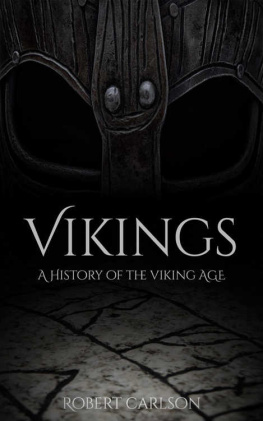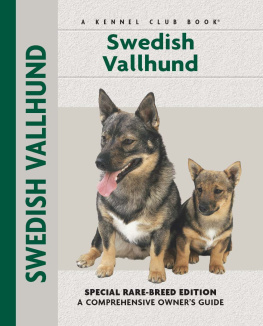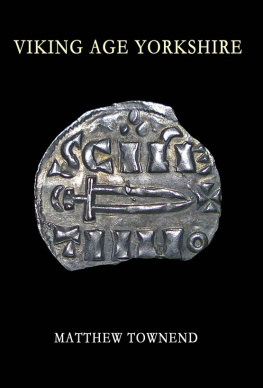Carlson - Wayward Warriors: The Viking Motif in Swedish and English Children’s Literature
Here you can read online Carlson - Wayward Warriors: The Viking Motif in Swedish and English Children’s Literature full text of the book (entire story) in english for free. Download pdf and epub, get meaning, cover and reviews about this ebook. year: 2015, genre: History. Description of the work, (preface) as well as reviews are available. Best literature library LitArk.com created for fans of good reading and offers a wide selection of genres:
Romance novel
Science fiction
Adventure
Detective
Science
History
Home and family
Prose
Art
Politics
Computer
Non-fiction
Religion
Business
Children
Humor
Choose a favorite category and find really read worthwhile books. Enjoy immersion in the world of imagination, feel the emotions of the characters or learn something new for yourself, make an fascinating discovery.
Wayward Warriors: The Viking Motif in Swedish and English Children’s Literature: summary, description and annotation
We offer to read an annotation, description, summary or preface (depends on what the author of the book "Wayward Warriors: The Viking Motif in Swedish and English Children’s Literature" wrote himself). If you haven't found the necessary information about the book — write in the comments, we will try to find it.
Carlson: author's other books
Who wrote Wayward Warriors: The Viking Motif in Swedish and English Children’s Literature? Find out the surname, the name of the author of the book and a list of all author's works by series.
Wayward Warriors: The Viking Motif in Swedish and English Children’s Literature — read online for free the complete book (whole text) full work
Below is the text of the book, divided by pages. System saving the place of the last page read, allows you to conveniently read the book "Wayward Warriors: The Viking Motif in Swedish and English Children’s Literature" online for free, without having to search again every time where you left off. Put a bookmark, and you can go to the page where you finished reading at any time.
Font size:
Interval:
Bookmark:
2016 Copyright
No part of this book may be reproduced in any form or by any electronic or mechanical means including information storage and retrieval systems, without permission in writing from the author.
The history of the Viking Age is well known, until you try to distinguish between the myths and the facts of this fascinating period of time. The prevailing idea is that we are dealing with a blood thirsty savage who will destroy anything and anybody in his path in pursuit of riches. A huge bearded man in protective leather battles dress, wearing a fearsome horned helmet and wielding a magic sword. Someone like Erik Bloodaxe; so named, for murdering all his brothers to facilitate inheriting his fathers kingdom. The horned helmet is a case in point! This iconic image became fixed in the public mind as a result of the costume designs by Carl Emil Doepler for the first production of Wagners great Ring Cycle in 1876. Doepler in turn borrowed the idea from drawings of some Nordic bronze figurines, dating from somewhere between 800-5000 B.C., that were excavated at Grevensvnge in Denmark. There is no evidence at all of the Vikings wearing such headgear.
Your average Viking was more likely to be a large, hard-working farmer, craftsman or trader. The Viking Age can be said to have run from 789 1066 C.E. and admittedly, it did commence with a devastating series of vicious and brutal raids on an ill-prepared and undefended Britain. However, as you follow their story in the following pages, we hope to give you a more balanced view of the Vikings as they evolve from marauders to explorers then traders and finally, productive settlers.
The Middle Ages were a time of orality and the record of events were often only put down in writing many years after they happened, which adds to the confusion of prying fact from fiction. Indeed, many of the characters we will meet are part real and part myth and their deeds part fact and part fantasy. This fuels the fascination I suspect. Beowulf is a great Viking hero whose deeds are told in one of the few complete AngloSaxon epic poems that have come down to us. The events take place in 500 C.E. and were written down in alliterative verse in 700 C.E. There is a brief extract before each chapter, just to give you a taste of the era. The translation is by Seamus Heaney, the 1995 recipient of the Nobel Prize in Literature. Something else that contributes to the unreliability of any written record of the time is the fact that the majority of the scribes would have been educated church men, inevitably Christians, who will have had scant sympathy and less understanding of the strange heathens from across the seas.
At the beginning of our story the land we know now as Great Britain consisted of seven kingdoms. The largest were Mercia, Northumbria, East Anglia and Wessex and there were three smaller but just as important kingdoms; Sussex, Essex, containing London, and Canterbury. The later contains the glorious Christian Cathedral, founded in 597 C.E. by St. Augustine. The population was largely still Roman with Picts settled in Scotland.
"So. The Spear-Danes in days gone by
and the kings who ruled them had courage and greatness.
There was Shield Sheafson, scourge of many tribes,
a wrecker of mead-benches, rampaging among foes.
A foundling to start with, he would flourish later on.
In the end each clan on the outlying coasts
beyond the whale-road had to yield to him
and begin to pay tribute. That was one good king."
BEOWULF
We call them Vikings but this is a misnomer as you will see. Who were these people? Most of them came from the countries we now group together under the name Scandinavia, i.e. Denmark, Norway, Sweden, Finland and Iceland. The inhabitants were more properly referred to as Danes, Norsemen or Norse, and of course, heathens. The only written history we have of the times is the Anglo Saxon Chronicle; a compilation of seven manuscripts first gathered together in 890 C.E., under order of Alfred the Great. These manuscripts, dealing with contemporary events, are written in Old English and the invaders are referred to as the Danes. The appellation of Vikings happened in about 1820 and came from the Old Norse language where it meant a pirate, voyager or one who lurks in a vik or an inlet, creek or bay. In Old Norse it would be said that a man would go on a vi-king (fara viking). Any modern dictionary will define Viking as: any of the Scandinavian pirates who plundered the coasts of Europe from the 8th to 10th centuries.
The population was widely distributed and very independent; they certainly did not answer to a single king or a ruler who held general sway. They were basically hunters, fisherman or free holding farmers who lived a healthy, relaxed and peaceful life although they would usually carry arms about their person. There were also many skilled craftsmen and women for that matter; blacksmiths; leather workers; metal workers; wood carvers and women who wove wool and linen and made decorative accessories. Their homes were built of wood, stone and peat, usually consisting of one long enclosed space with a fire place in the middle of the length. Areas were demarcated for cooking, eating, sleeping and an indoor relaxation space. The relaxing area would have been used for playing the many different kinds of board games, including the forerunner of chess, which were a popular pastime in the long, cold winter evenings. The gatherings during which the great poetic sagas would be recited by the older people or a visiting itinerant skald would take place in this space. More often than not, the longhouse would also be shared with animals. As the family expanded or contracted, the layout would be adapted accordingly. In general the people lived well. Their diet consisted of pork, beef, mutton and sometimes horsemeat. This might be supplemented with reindeer, elk or even bear. They cooked a tasty stew (skause) with vegetables like carrots, cabbages, beans, peas and endives using flavorings of coriander and cumin and condiments like mustard and horseradish. They also ate a lot of fish. They baked bread of grains, beans and birch bark and ate seasonal fruits like wild apples and various berries. Excavation sites have revealed that they seemed generally robust and healthy although there is evidence of intestinal parasites. Their clothes consisted mainly of woven wool material with the wealthier folk able to afford linen, died in pastel colors by using natural vegetable extracts. Long shirts, tunics or quite close fitting trousers would be held in place with strips of animal skin and a wide variety of ornamental brooches and pins. They were skilled hunters and animal fur was used for footwear and hats and, of course, different kinds of outer travelling cloaks and protective wear. There was a poorer class of slaves and serving people and a middle class of yeoman and farmers as well as an aristocratic, appropriately bejeweled, educated and fashion-conscious wealthier echelon.
Extended families and friends would band together loosely under a natural leader or chieftain and a clan structure might develop, fluctuating in size and casual mutual interests. The chieftain might also officiate as a priest or holy man of sorts during recurring religious festivities. There were rituals that sometimes involved animal sacrifices, but there is no record of human sacrifices. Although the Anglo Saxon St. Willibrord had landed a tentative Christian mission in Denmark in 725 C.E., Scandinavia was definitely heathen until the mid-12th century. At the time of the Viking invasions the locals worshipped a colorful and fearful array of pagan gods and giants, who were at war with each other. The most powerful and chief god was Odin the god of war, justice, death, wisdom and poetry. He once hung on a tree for nine days having been wounded; it seems, by his own spear called Gungnir. Thor, the god of thunder, seems to have been the most popular god. He was immensely strong, but some said, not that bright. Despite this, in one of the epic Sagas, he outwits the devilishly clever dwarf, Alviss. He defended the other gods from the giants with his magical hammer, called Mjllnir. Then there is the twins; Freyja, the wild woman, goddess of magic and sexual favors. She is also the patron of cats and their owners. Her brother is Frey, the god of kingship, good weather and gentle rains. He was often called upon for protection during battles. Frey often rides through the air and over water on Gullinbursti, his gold-bristled boar. There are too many gods to enumerate, but we must say something about Loki as well. Loki is perhaps not a true god but more of a cultural trickster, a forerunner of the court jester or a Lord of Misrule. A blood brother to Odin, he is often in the company of Thor and he seems to bring the gods to the brink of disaster and he then promptly rescues them. He often brings a lot of humor to the old Anglo Saxon tales.
Font size:
Interval:
Bookmark:
Similar books «Wayward Warriors: The Viking Motif in Swedish and English Children’s Literature»
Look at similar books to Wayward Warriors: The Viking Motif in Swedish and English Children’s Literature. We have selected literature similar in name and meaning in the hope of providing readers with more options to find new, interesting, not yet read works.
Discussion, reviews of the book Wayward Warriors: The Viking Motif in Swedish and English Children’s Literature and just readers' own opinions. Leave your comments, write what you think about the work, its meaning or the main characters. Specify what exactly you liked and what you didn't like, and why you think so.



















